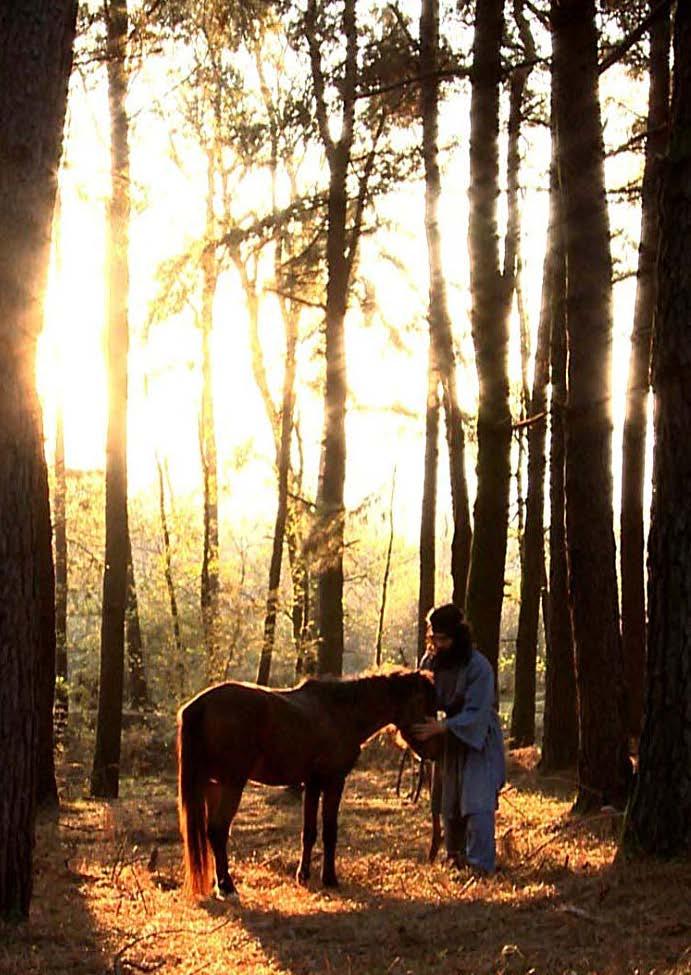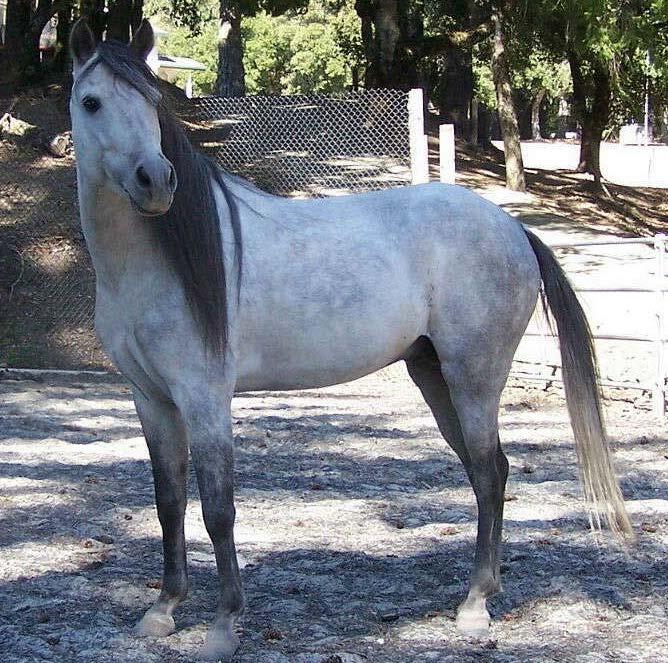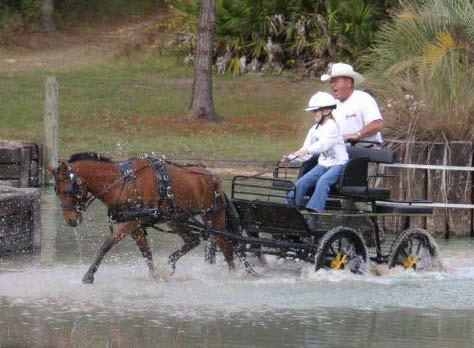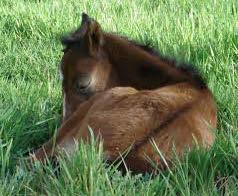
6 minute read
HORSE BREED
HORSE BREED
The Caspian – a Tiny Horse with a Big History
The Caspian is easily one of the world’s rarest horses, and is thought to be one of the oldest horse breeds in the world today, writes DANNII CUNNANE.
Please note the term ‘horse’. Despite the Caspian’s small stature – it only grows up to 12 hands high, it’s considered a horse. This breed has been the subject of a lot of controversy and research, which has finally established that their bone structure is that of a horse rather than a pony. The breed dates back to ancient Persia, at least as far as 3,000 B.C. Experts now believe the Caspian to be the forerunner to the Arab horse and therefore to most of the hot-blooded horses in existence today, and is thought to be one of the oldest horse breeds in the world today. Its ancestors date back from the nowextinct miniature horses of West Asia, that lived in the region from 3,000 B.C until the seventh century. The horses now inhabit an area between the Caspian Sea and the Elburz Mountains (Iran), although new groups of horses potentially related to the Caspian have been identified outside this area.
In the early 1900’s the breed was thought to be extinct, but luckily the Caspian Horse was rediscovered in the 1960s in a mountainous region of northern Iran, not far from the Caspian Sea. It was rediscovered by Americanborn Iranian horse breeder, Louise Firouz, who was searching for small ponies to be ridden by children when she happened upon a bay stallion in the town of Amol. The horse was pulling a heavy cart and was nicely conformed with the body of a well-bred oriental horse. Louise purchased the stallion and named him Ostad.
Louise was amazed by the strength and intelligence of her stallion and found locals using horses with similar features, becoming convinced that these horses were the same ancient breed she had seen carved on the walls of ancient Persian ruins. After painstaking analysis, scholars and scientists concluded that these little horses of modern Iran were very likely to be the same breed as those depicted some 2500 years ago, on the palace walls at Persepolis. The researchers also concluded that the horses blood lines had remained mostly pure since 3000 B.C, classing them among the oldest pure breeds in existence. These were the descendants of the tiny brave chariot horses that pulled warriors and kings into battles and on lion hunts.
As Louise found out more about the horses, and discovering that they were few in number and in poor condition, she began a breeding program with Ostad at her riding school in Norouzabad, starting with seven mares and six stallions. Ostad became a successful sire of children’s ponies and it was here that the breeding program established the Caspian Royal Horse Society.
In 1965, on a visit to her family in Great Falls, Virginia, Louise approached Kathleen McCormick with the Caspian story and photos of the horses she had brought to Norouzabad. A plan was made to export a Caspian stallion from Iran to the United States to start a breeding program there. Kathleen selected the stallion Jehan from the group of photos and in April 1966 the stallion started the four-day journey to New York. Because there was difficulty getting Jehan out of Iran, only a partbred breeding program was established in the United States at that time and plans to import mares were put on hold.

After visiting Iran in 1976 and seeing the Caspian for the first time, Prince Philip suggested that some of the horses be shipped to England to start a pure population in the UK. In the same year a Caspian stud in England was formed, saving much of the foundation stock. During the Iran/Iraq war in 1980, the horses were again used as pack horses and for food, which depleted their numbers in their native country. A ban was also put on horse ownership which also led to their decline. Following the war in 1988, the ban on horse ownership was lifted and Louise managed to find 15 horses that could be used for breeding (after performing DNA testing to confirm they were the Caspian breed).
These horses began the Persicus stud, and in 1993, a further seven horses were exported for breeding in England, with the help of the Russian Horse Society. The combined efforts of breeders across the world have established the breed in
several European countries, as well as in Australia, New Zealand and the United States, with the first American Caspian purebred breeding program beginning in 1995. There are approximately 300 purebred Caspian horses in the United States which now maintains close to half of all Caspians in the world outside of Iran. This has put the breed on the critically endangered list.
Just as ponies, drafts and light horses each have their distinctive characters and physical qualities, so do the Caspians. In several studies, it was determined that many Caspian horses have 65 chromosomes, as opposed to the usual 64. It’s probable that the Caspian horse is actually a hybrid cross of the domesticated horse, Equus Caballus, and the Przewalski horse, Equus Ferus Przewalskii (which has 66 chromosomes). This helps to explain why the Caspian horse is quite different from other breeds.
Characteristics
Looking at photographs without any point of reference, most people think that the Caspian is a full-size horse.
It’s very small by modern standards, averaging between 11-12 hands. Extra molars can be found in the top jaw where modern breeds have wolf teeth. The lack of a parietal crest in the skull, allows for a domed forehead. The shoulder blade is longer, and wider at the base than the top. The forearms are longer and slimmer in comparison to other horses, and the length from the point of the hip down to the hock is longer. The first six vertebrae of the back show a pronounced elongation. The hooves are narrow and oval-shaped, and extremely hard. The overall impression of a Caspian should be one of elegance and nobility. The head exhibits deep, prominent cheeks with good width at the throat latch. The head is broad above, usually domed, and tapers to a tiny muzzle. Their coats often have special properties that make them appear iridescent in the summer sun.
Caspians come in solid colours, and rarely have white markings; a testament to their ancient heritage. Primitive markings such as dorsal stripes, gruella bars, and ‘spider webs’ are common, and they are occasionally born with curly coats, a primitive trait seen in some Central Asian horses.
Having been used for war and lion hunting in ancient times, the Caspian retains an incredible braveness. They are highly intelligent and alert, while being kind and willing. This makes them an ideal first pony for children. With proper training and supervision, even stallions
can be handled by experienced youths.
The Caspian moves like a large horse and its phenomenal jumping abilities can often match the performance of a full-size horse. The potential of a Caspian as a hunter/jumper is outstanding. As driving prospects, Caspians rate second to none in their height category. This is the one area where adults can enjoy the fun and excitement of the breed.


The Caspian maybe small, but it’s a small horse for all that. If you see it without something to put it into perspective you would never believe that it’s only 12hh. It’s one of the rarest, and oldest breeds on the planet, versatile enough to use for riding, carriage driving, companionship, and breeding – check out the gorgeous tiny foal.
Further information
The Caspian horse is a very special breed. For further information, visit the Caspian Horse of The Americas website.










